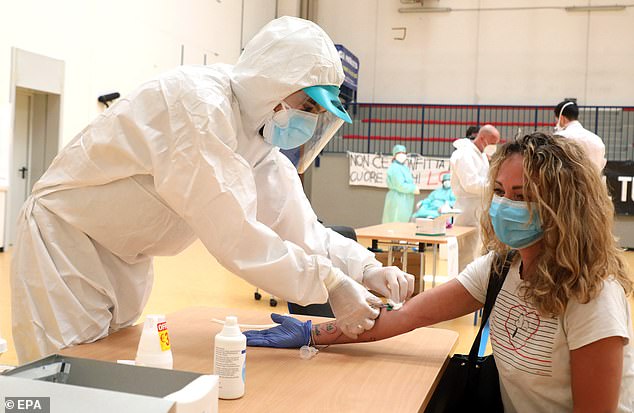ROME, April 23, 2020 (BSS/AFP) – Italy began conducting antibody
tests in one northern region on Thursday seeking information about
coronavirus immunity to help guide authorities as they reopen the long
locked-down country.
Lombardy, the region hardest-hit by the coronavirus crisis in
Europe’s worst-affected country, is betting that the science about
“herd immunity” derived from the blood tests will help the prosperous
industrial region return to work faster and safer.
Nearly 13,000 people have already died of the virus in densely
populated Lombardy, whose capital is Milan — or more than half of
Italy’s total dead.
Although Germany has already started nation-wide antibody tests and
countries such as Finland and Britain have announced plans to roll
them out, many questions remain about how reliable data derived from
the tests will be.
Health authorities have said 20,000 tests would be performed every
day in Lombardy. First to be tested are those in the worst-hit
provinces: health workers, those under quarantine showing coronavirus
symptoms and those they have been in contact with, as well as others
with mild symptoms.
Authorities hope to roll out the tests to the wider region after April 29.
The head of Italy’s National Health Council, Franco Locatelli, said
last month antibody tests would help authorities determine the spread
of the coronavirus.
Data would also provide “very relevant information on herd immunity”
which would useful in developing strategies to help restart the
country, he said, such as who could be allowed to go back to work.
The kits, made by Italian biotech firm DiaSorin, look for the
presence of antibodies in the blood. Such antibodies indicate that the
person has been exposed to the virus, pointing to some level of
immunity.
They differ from the more common swab tests, which test molecules
from nasal secretions to determine whether a person currently has the
virus.
Lombardy’s swab testing has revealed that 24 percent of those tested
have the virus.
– Risks remain –
Immunity to the virus is little understood and hopes about its
efficacy possibly exaggerated. Lacking data, virologists and
epidemiologists must extrapolate information from past coronaviruses
to make predictions.
Experts believe at least 60 to 70 percent of a population must be
immune to the virus in order to gradually wipe it out. But recent
studies, such as one conducted in March and April by France’s Institut
Pasteur, have found that so-called “herd immunity” was harder to
attain than believed.
At a high school in the Oise department, site of one of the
country’s first outbreaks, researchers found only 26 percent of
students, teachers and their families carried antibodies.
Moreover, it is not known for how long immunity to coronavirus
lasts, meaning there is a risk those deemed “immune” may be
re-infected and pass along the virus to others.
In the 2002-2003 Sars epidemic, those who had contracted the virus
but recovered were immune for two to three years on average, according
to Francois Balloux, director of the Genetics Institute at London’s
University College.
“One can certainly get reinfected but the question is, after how
much time? We won’t know until retroactively,” Balloux told AFP.
Even more risky, a person who has developed antibodies can still
carry traces of the virus, and thus be contagious. Therefore, experts
such as Italy’s Locatelli say antibody tests should be accompanied by
swab testing.
Immunologist Jean-Francois Delfraissy, who heads France’s scientific
council formed to fight coronavirus, said many doubts remain.
“We’re currently asking the question whether someone who has had
COVID-19 … is as protected as we think,” said Delfraissy.
Scientists must wait until more reliable data is available, said
Saad Omer, director of the Yale Institute for Global Health.
“It’s too premature,” Omer told AFP. “We should be able to get
clearer data very quickly — in a couple of months — when there will
be reliable antibody tests with sensitivity and specificity.”



